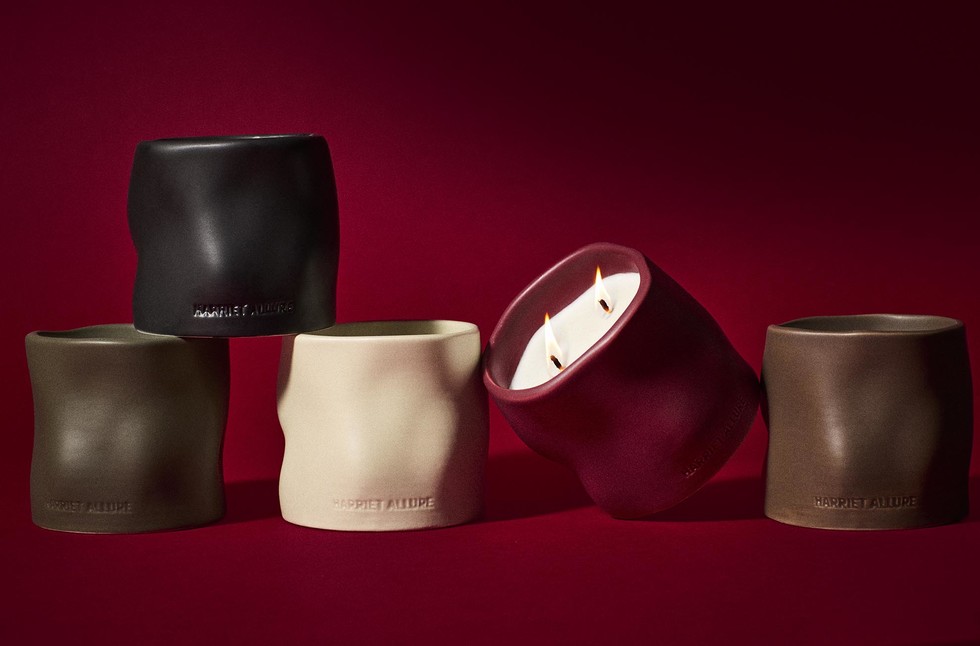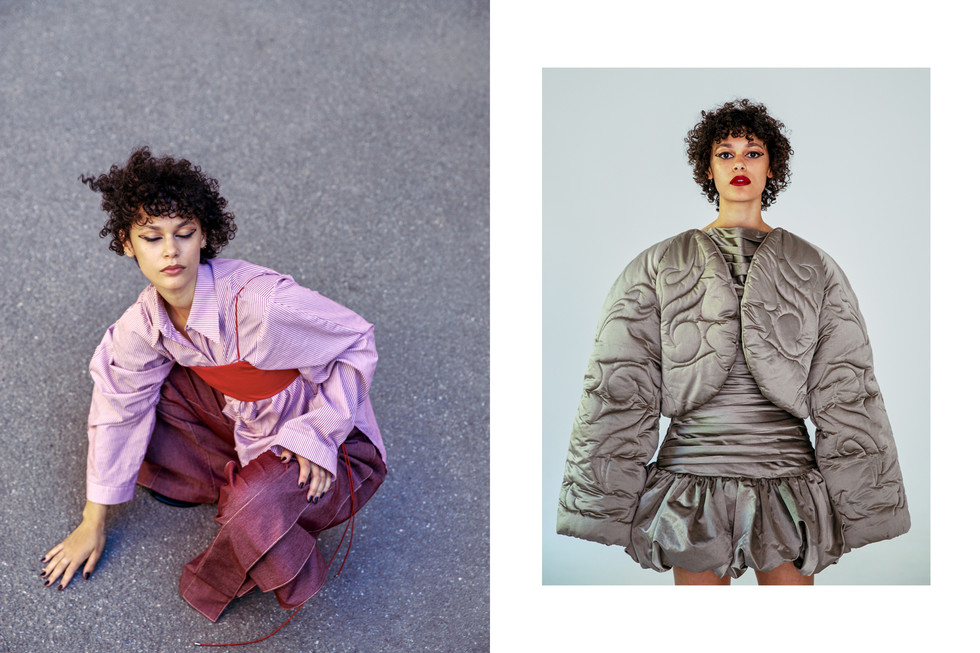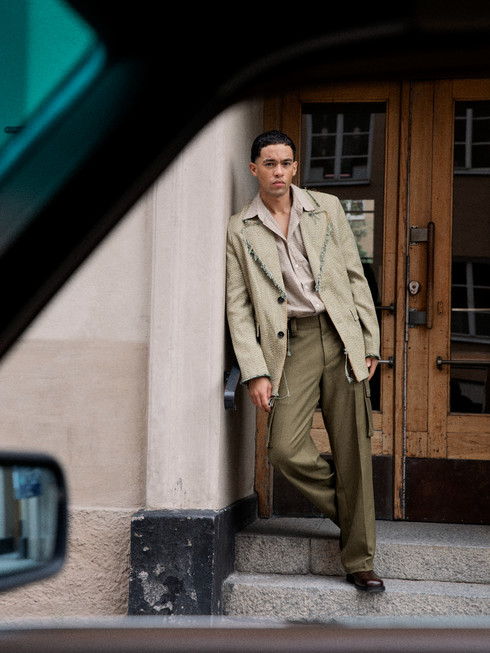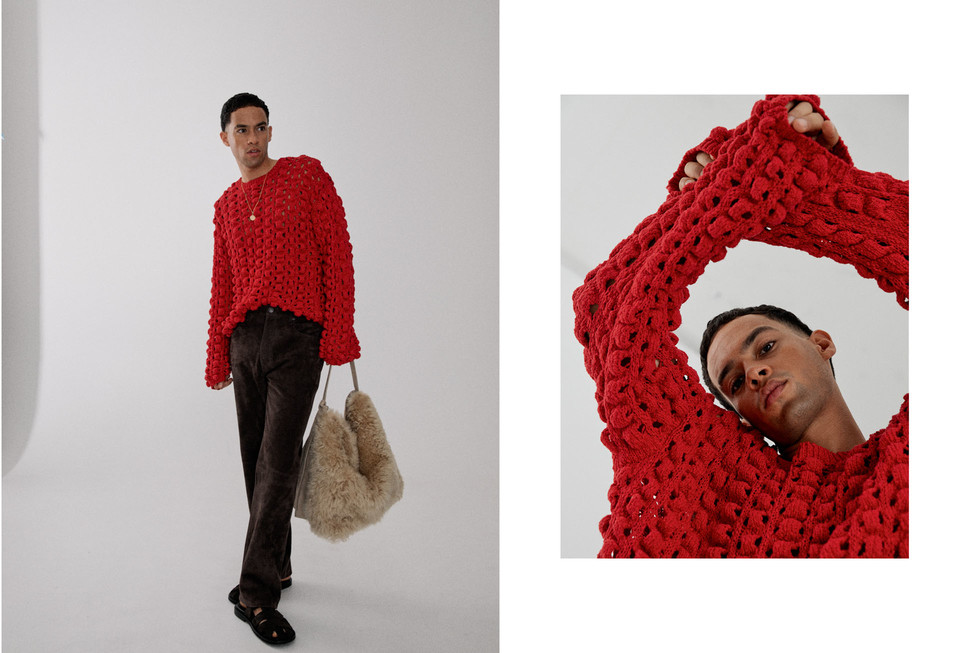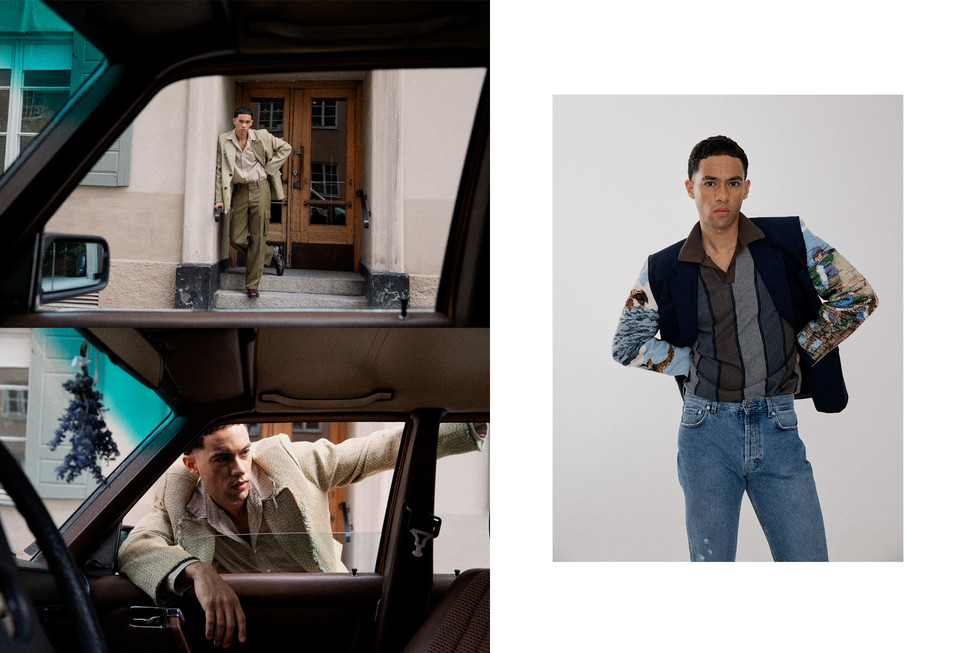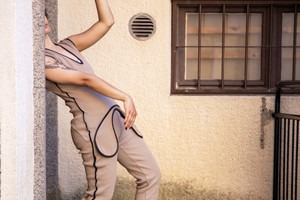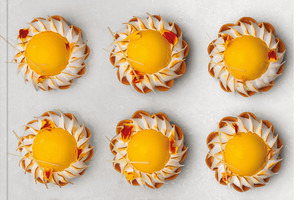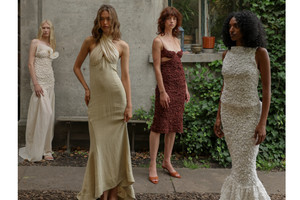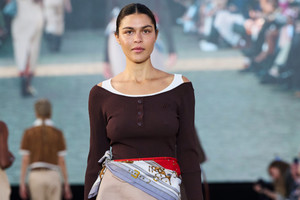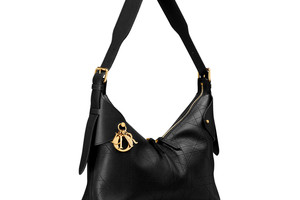Saveja first caught the eye of fashion around seven. Her mother, a fashion designer herself, inspired Saveja to fulfill the dream. A kid, Saveja would sneak into her mother’s workspace to use her sewing machine, loving the sound and feeling of stitching. Fashion became Saveja’s escape from reality, and through this creative, unique, and beautiful space she built, Saveja made her aspirations into existence. As her career grew, Saveja held onto the special feeling of endless possibilities and opportunity to spread a message beyond her work.
“I didn’t just want to wear fashion, I wanted to create it, shape it, and give it meaning”.
Janae: What’s the collection you are most proud of?
Saveja: The collection I’m most proud of is called Lost On Silk Road. It’s a timeline frozen in textures and colors — a crossroads between modernity and tradition. The concept comes from tales about the Silk Road I heard as a child, now reimagined through the lens of my everyday life as a Scandinavian. The Silk Road, this meeting point of cultures and history, is more than just a metaphor — it’s my reality. I’m Uyghur, born in China, and a Swedish citizen.
This collection is an inner journey — a return to my origins, but also a construction of a new identity that embraces all the cultures I represent. It’s deeply personal, yet globally resonant. Through design, I’ve created space for all parts of myself to exist and evolve.
J: What is something you wish you knew earlier in your career?
S: I wish I had understood sooner that clarity is power — especially in business. Creativity thrives with direction. As a designer, it’s easy to pour everything into the work and overlook structure, but building a brand requires both vision and systems. Once I leaned into that balance, things began to move with intention.
J: What is one piece of advice you received that stuck with you and helped you grow as a fashion designer?
S: When I was 15, one of my teachers told me: “Never say that you dream of achieving something — always see it as a goal, and you’re already one step closer.” That changed everything for me. It made me take myself seriously, even when others didn’t. It gave me the confidence to treat my ambitions not as fantasies, but as steps on a path I was already walking.
J: How would you define your style?
S: My style is paradoxical and sexy, with a hint of mystery. I’m drawn to contrasts — soft structure, refined boldness, the mix of old-world symbolism with modern silhouettes. I think there’s power in restraint, but also in unexpected detail. It’s not about being loud — it’s about being intentional. My work is rooted in culture and identity, but always seen through a contemporary lens
J: Having moved to Sweden from China at the age of 18, what was the culture shock like? What stood out to you most about Swedish culture?
S: Definitely the minimalistic aesthetic. When it comes to fashion, Sweden is quite the opposite of China. There are two distinct styles here: one very minimalistic — it can be just a pair of plain trousers and a T-shirt — while more fashionable people tend to go extreme, even cartoonish, with outfits that have so much detail.
J: How does that experience inform your creative process? Where do you draw inspiration from?
S: That has been interesting, it has given me, like, a lot of access to different inspiration. I’ve realised while creating my graduation collection that I make a lot of references to the cultures I have lived in. They make up my identity, both personally and professionally. In China, we deeply believe in symbolism; whether it be colours, the food you eat, even numbers and the weather, and that has been very interesting for me to put into my designs. The shape of a pocket or other small details allows me to put all the symbols into the clothing.
J: Symbolism clearly plays an important role in your creative process. What other elements of Chinese culture have you tied into your designs?
S: Symbolism for me, when I look back, is a lot of different things, from the food to the culture and the language; the characters I can write and read in Mandarin inspire me, seeing their shapes and how the Chinese symbols look.
J: What are you excited about in the future? Is there anything you can share, exciting projects you’re currently working on?
S: I’m launching my brand this autumn, which is very exciting. We’re starting with handbags, the production is all ready. So it’s super exciting. Other than that, I started working for Alice Stanlouv, the Swedish influencer. We’re working on a rebrand, and we’re launching a whole new collection this fall as well. So I’m launching my own brand and her rebrand, too!




